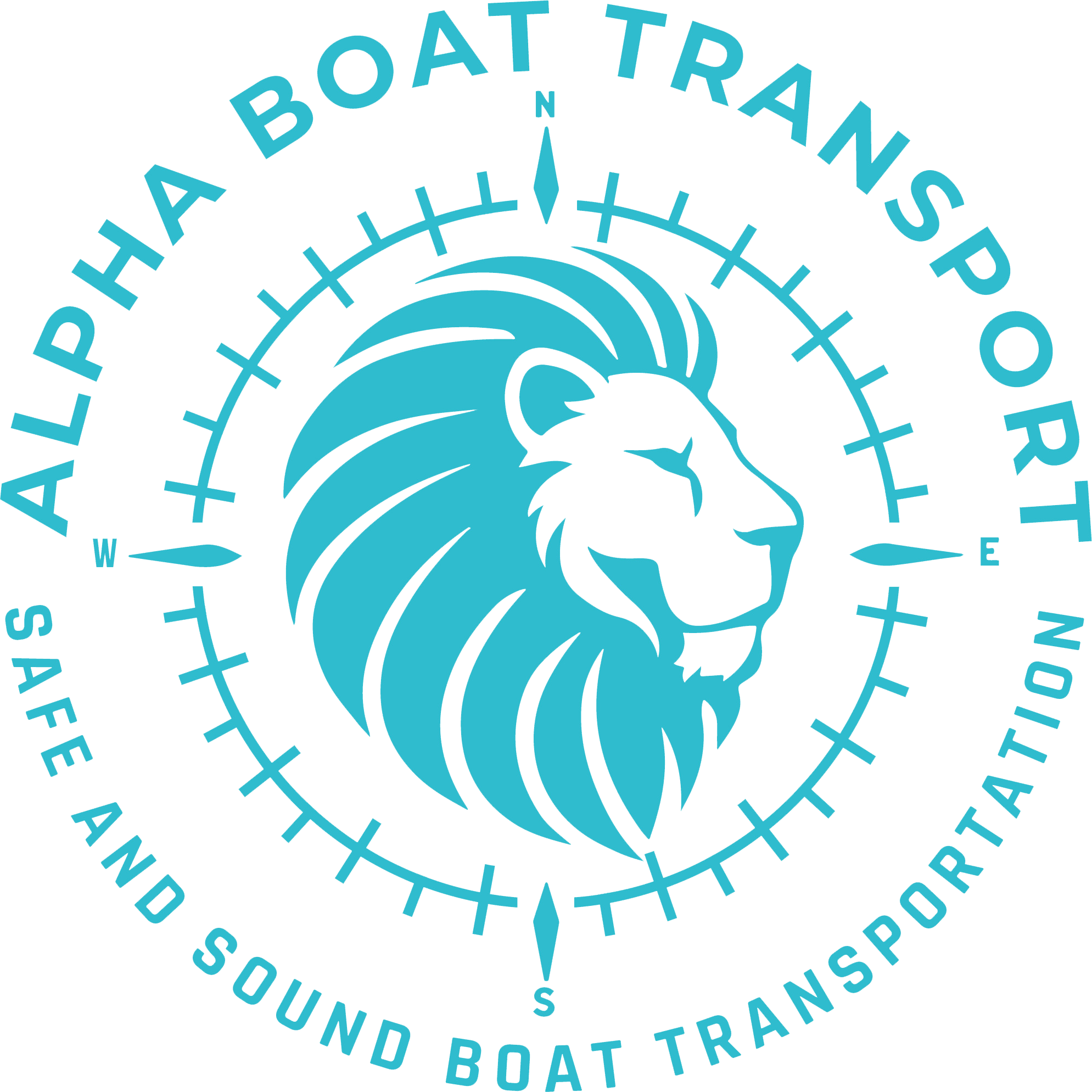New 2025 Highway Rules Delay Boats—What Every Boat Owner Needs to Know Before Transporting Interstate
Here’s a stat that’ll knock your coffee right outta your hand—over 60% of U.S. states are tightening boat transport rules starting in 2025, according to CitizenShipper’s report on boat transport costs. That means if your boat crosses state lines over 8.5 feet wide, and most do, you’re hitting a wall of new permits, prep time and paperwork hell that wasn’t there before. And yeah, this has real consequences if you’re planning on transporting a boat interstate anytime soon. So listen, this post ain’t just a heads-up—it’s your playbook.
We’ll break down what the highway rule changes mean, which states are the worst offenders (looking at you, Florida and California), and exactly how to dodge crazy delays and nasty fines. And—because I give a damn—we’ll walk through how to pick a team that knows this game inside-out, like Alpha Boat Transport. They’ve been steering through regulatory storms like this for years.
What These 2025 Rule Changes Really Mean for Boat Owners
Let me paint the picture for you. Your 32-foot Sea Ray’s been sitting tight all winter up in Massachusetts. When March hits, you want it floated down to your cozy Sarasota slip. Except now Florida says if your boat’s over 14.5 feet wide, you need a route survey—just to apply for a permit. That’s a 3-day setback, easy, even without reroutes for weight limits or bridge clearance.
These changes hit hard if you’re transporting a boat interstate and don’t know the new traps. As most experts agree, the 8.5-foot width rule is where things start to heat up. Any vessel wider than that triggers oversize restrictions, and every state is playing by a different rulebook now.
California? They’re enforcing axle group weight limits at 34,000 pounds per tandem axle—meaning if your trailer setup’s old-school, you’re either reconfiguring or risking a fine steep enough to make you seasick.
Alpha Boat Transport’s ahead of this curve—they’ve already upgraded their rig specs and software for real-time compliance checks. That foresight helps prevent last-minute snafus and shipment seizures that could cost you thousands.
Need help prepping your boat for smooth transit? Here’s the go-to: boat transport preparation guide.
Why Height, Weight, and Width Rules Are Wrecking Transport Timelines
It used to be simple. Throw it on a trailer. Grab a permit or two. Done. Not anymore. Now with so many states rewriting height, width, and weight exceptions—sometimes mid-season—you gotta map every route like you’re planning a Navy recon op.
Boats taller than 13.6 feet? They’ll likely need pole escort services through Colorado or Utah. Hauling through Pennsylvania? Watch for bridge limitations and sudden detour zones. These aren’t “nice-to-know” details—they’ll get your boat impounded if you ignore them.
You know what drives me nuts? These rule changes punish the weekend boater with zero warning, while seasoned haulers like Alpha Boat already adjusted their logistics pipelines. Makes ya wonder… why didn’t anyone send you the memo?
For the more height-sensitive crafts, check out how Alpha handles sailboat transport amid new clearance laws.
Hidden Costs to Expect From Delays in 2025
Here’s another gotcha—we’re seeing spikes of $600 to $2,500 in extra permit costs just due to reissued routes, escort vehicles, or route surveyors. And let me tell you, this ain’t optional. Neglect one detour and the DOT might slap you with delays that eat up marina bookings and damage control budgets.
And sure, some haulers won’t mention these hidden costs upfront. Alpha Boat Transport doesn’t play those games. They’ve got transparent pricing, built-in regulatory mapping, and real humans picking up the phone. Not some chatbot sending you a quote for a flatbed from 2007.
If you’re doing this for a high-end vessel, avoid nasty surprises—peep their mega yacht transport checklist, it’s a freaking lifesaver.
Interstate Transport Planning: 3 Steps to Avoid 2025 Pitfalls
- Know Your Dimensions to the Inch—Guessing doesn’t cut it. Measure length, width, and height precisely, including any T-tops, arches, or radar.
- Pre-clear Routes—Not just GPS. You need a team that checks permit thresholds, night travel bans, road work zones, and weekend limitations. Alpha’s got proprietary route-planning tech baked into their quotes.
- Double-Verify Compliance Gear—From tie-down ratchets rated for your hull class to trailer brake calibrations, you want it overbuilt.
Quick tip—don’t trust every company that says “We’re licensed and insured.” Verify how their coverage matches your boat’s hull insurance. If they ding it, you want a paper trail that holds up in court.
For those transporting within Texas, start with this local tool: boat transport Texas.
How Seasonality and Timing Multiply the Risk
Spring’s always busy for movers—it’s no secret. Come March-April, everyone wants out from drydock and splashed before Memorial Day. But now with states enforcing blackout periods for oversize on weekends or holidays, you gotta plan months out—not weeks.
Don’t even get me started on Florida. Their DOT just published routes that need a minimum 48-hour load notice PLUS escort vehicle pre-approval if you’re transporting beamier catamarans. Planning late? Say hi to July slip fees while your rig clears inspection.
Get ahead of that spring surge. Read Alpha’s breakdown on New Jersey to Florida boat transport routes.
Expert Insights: What Veteran Transport Pros Are Seeing
Spoke last week with an old buddy from my Wharton days—he manages permitting for a tri-state logistics firm. Said the number of rejected dimension permits tripled compared to last year. Most were flagged by new AI weigh station software rolling through Arizona, Nevada, and Louisiana.
Translated? You don’t want to be the guy paying for two trailers because the DOT flipped the route the night before your pickup.
Word of mouth’s saying Alpha Boat Transport nailed 98% on-time delivery in Q4 last year. That’s unheard of with weather and red tape combo-punches. Consistency like that points to experience, not luck.
If you’re jumping state lines out west, protect yourself here: Washington boat transport.
Frequently Asked Questions
What permits do I need when transporting a boat interstate?
You’ll need oversize load permits if the boat exceeds 8.5 feet in width or 13.6 feet high. Some states (like CA or FL) now demand route surveys and special escort services for wide loads. Confirm all permits per state before the pickup date.
How do the 2025 highway rule changes affect boat transport timing?
Delays are common due to new permit application requirements, stricter trailer weight laws, and weekend/holiday movement bans. Start planning transportation at least 4–6 weeks out.
Are all boat transport companies ready for these new rules?
Nope. Only experienced haulers like Alpha Boat Transport are adjusting trailer tech and permit workflows fast enough to keep up. Many low-cost haulers aren’t properly insured or route-cleared.
Can I still transport a boat under 30 feet without a permit?
Not always. Even boats under 30 feet can trigger permit requirements if they’re too wide or ride high on a bunk trailer. Double-check beam width and trailer height combined before assuming you’re in the clear.
What happens if my transport is delayed at a weigh station?
You could face storage fees, ticketing, or even forced offload if the DOT finds violations. That’s why choosing a carrier that understands modern axle distribution laws is non-negotiable.
Should I buy extra insurance for interstate boat shipping?
Always. Most standard marine policies don’t cover land transport, especially if there’s fault on the carrier. Look for transporters that offer cargo insurance and inspect carrier COIs before booking.
How much does it typically cost to transport a boat interstate?
Fees range from $3 to $10 per mile depending on size, permits needed, and distance. For full pricing breakdowns, see this deeper dive from CitizenShipper’s transport cost analysis.

